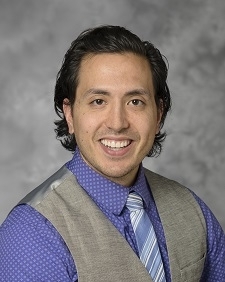
“September is suicide prevention month, and this September 17, 2020, is the third annual National Physician Suicide Awareness Day. The primary purpose is to create a day to commemorate colleagues lost to suicide and to raise awareness about the issue internally and externally by shedding a light on it. Through this, we hope that we will lessen the stigma for physicians and all other clinicians to speak about their struggles either privately or openly - and seek help.” – Council of Residency Directors in Emergency Medicine
We spoke with Jason Curry, DO, Program Director of the University of Arizona’s Psychiatry Residency Program, about specific challenges physicians face when it comes to seeking help for mental health struggles, coping with burnout, and mitigating suicide.
What are some of the main risk factors for physician suicide?
Not seeking help. The risk factors for physician suicide are similar to the risks for suicide in general: depression, loss, access to lethal means, hopelessness, substance use, etc. Although, we know that suicide rates are much higher for physicians – male physicians are at a 40% increased risk and female physicians are at a 130% increased risk from that of the general population.
There is a difficulty for physicians, charged with the care of others, to identify and accept their own need to seek care from others. The stigma of suicide may evoke feelings of shame and guilt for the physician, which can limit their pursuit of help.
We know that burnout plays a role in physician suicides – what are some of the preventative measures that physicians can take personally to avoid burnout?
Burnout paints a picture; something like a candle burning, perhaps from both ends. The good news it that human beings are not candles with a finite amount of wick and wax. This allows physicians the opportunity to take steps that increase the purpose, passion, relaxation, stress relief, reinvigoration and connection physicians need to increase their “wick & wax.”
Such preventative measures tend to be highly personalized; however, they do most often center around connection (e.g. spending time with family, creative pursuits, community involvement) and giving one’s self the permission to take time for necessary self-care.
Once burnout is recognized, what are some practical actions that physicians can take on an individual level?
Tell a trusted confidant, perhaps a coworker, friend or companion. Together determine what resources are available to attain help. Though it may be scary, informing the key person(s) at work who can offer help may be important. Many companies have counseling and work-relief programs to assist physicians dealing with burnout. If the physician is self-employed there are many community resources available, especially through the physician’s guild/professional organization that are often free.
What interventions can be made by an organization or group to help mitigate physician suicides?
The way an organization is structured is key to the well-being of physicians and others who work within it. Self-determination theory teaches us that building work structures which support physician autonomy, help build competence and increase relatedness are antidotes to burnout. Reducing burnout is a critical element for prevention of physician suicide.
Making room for conversations about well-being that are authentic and allow for physicians to bring forth issues without the fear of stigma is essential. Educating all staff about risk factors and warning signs, creating well known pathways for reporting of such concerns to supervisors or human resources, and providing avenues for seeking support via an employee assistance program (EAP) or clinicians associated with the workplace are important steps. The goal is to identify risk early and provide timely intervention.
Institutionalized stigma and shame may make it difficult for struggling physicians to seek help. What are some of the warning signs to look for within ourselves and our peers?
Does it appear the work is losing meaning? Are more mistakes happening at work? Is the person more absent emotionally, physically and intellectually from the work? On the other hand, has the work seemed to overtake the person’s life, leaving little room for outside enjoyment and pursuit? Is the person exhausted? Has the person become less compassionate, less motivated and less social in their work?
The warning signs may be varied and diverse. Warning signs may be subtle and difficult to recognize when the work of physicians is generally so demanding. The key is dialogue about these issues openly and honestly. Encourage an environment where self-reflection is promoted.
One of the barriers to physicians seeking help is the potential professional implications it may have, including on the medical license procedure. What are some resources for physicians and who could they discuss these concerns with?
The American Medical Association (AMA), the American Psychiatric Association (APA) and their local chapters have been advocating for changes in medical licensing process, especially the questions pertaining to mental health and treatment. State boards have been urged to ask questions only about conditions that currently impair a physician’s judgment or ability to practice medicine safely. Physicians are encouraged to seek mental health treatment early such that the effect on their ability to practice is minimized. The state medical association or own professional organization can be valuable resources to learn about state specific processes.
Resources
- Physician Support Line 1-888-409-0141
- Banner’s Cultivating Happiness in Medicine program (CHIM)
- National Suicide Prevention Lifeline 1-800-273-8255
- National Alliance on Mental Health Southern Arizona
- National Institute of Mental Health
- American Foundation for Suicide Prevention
- Council of Residency Directors in Emergency Medicine

